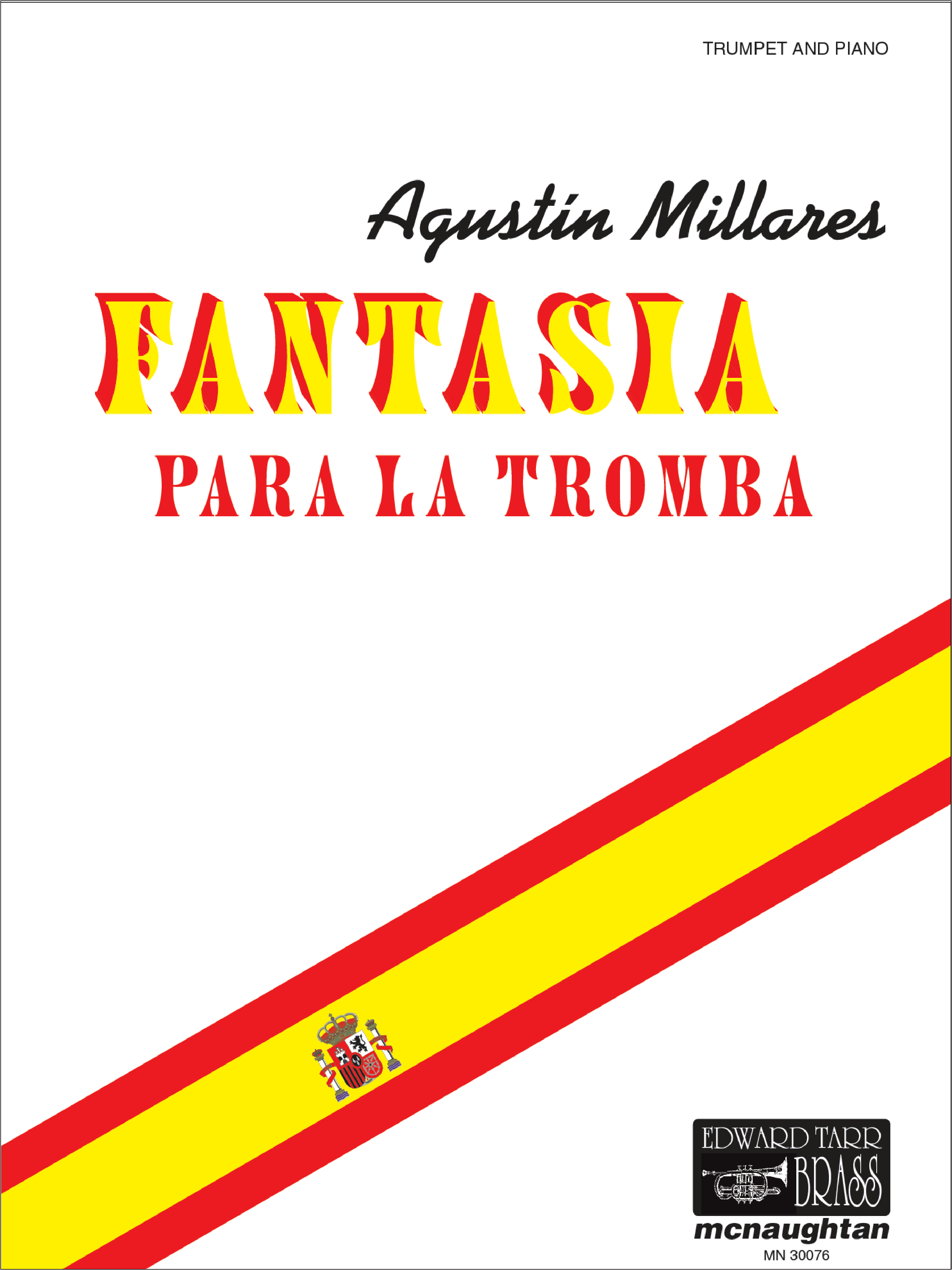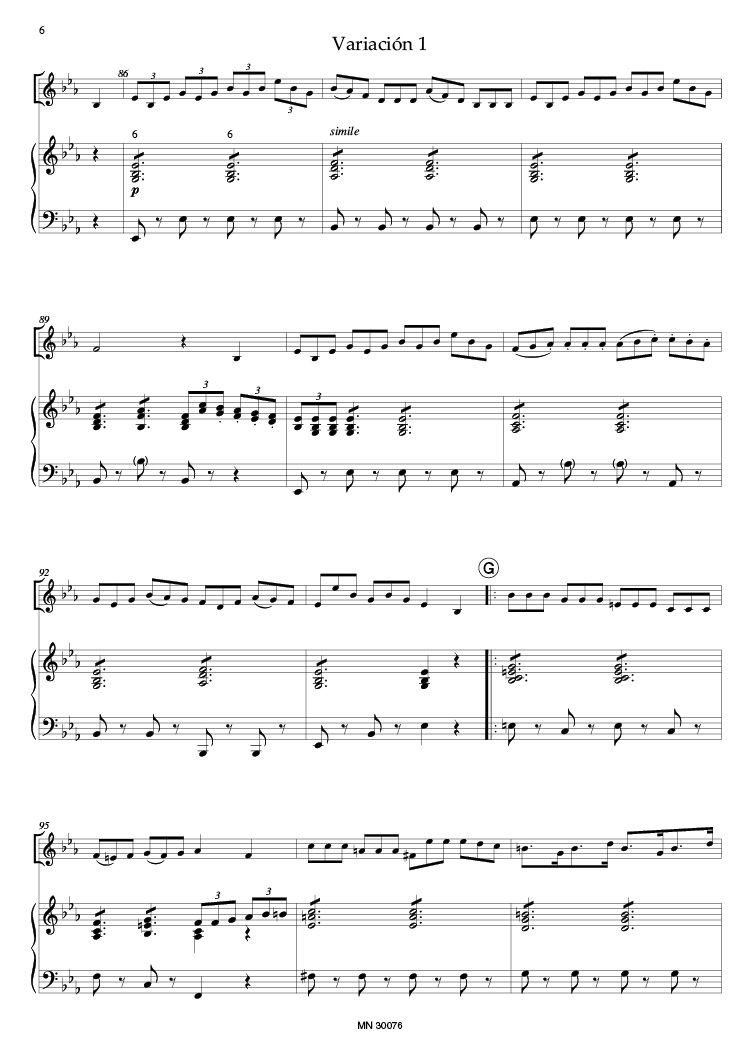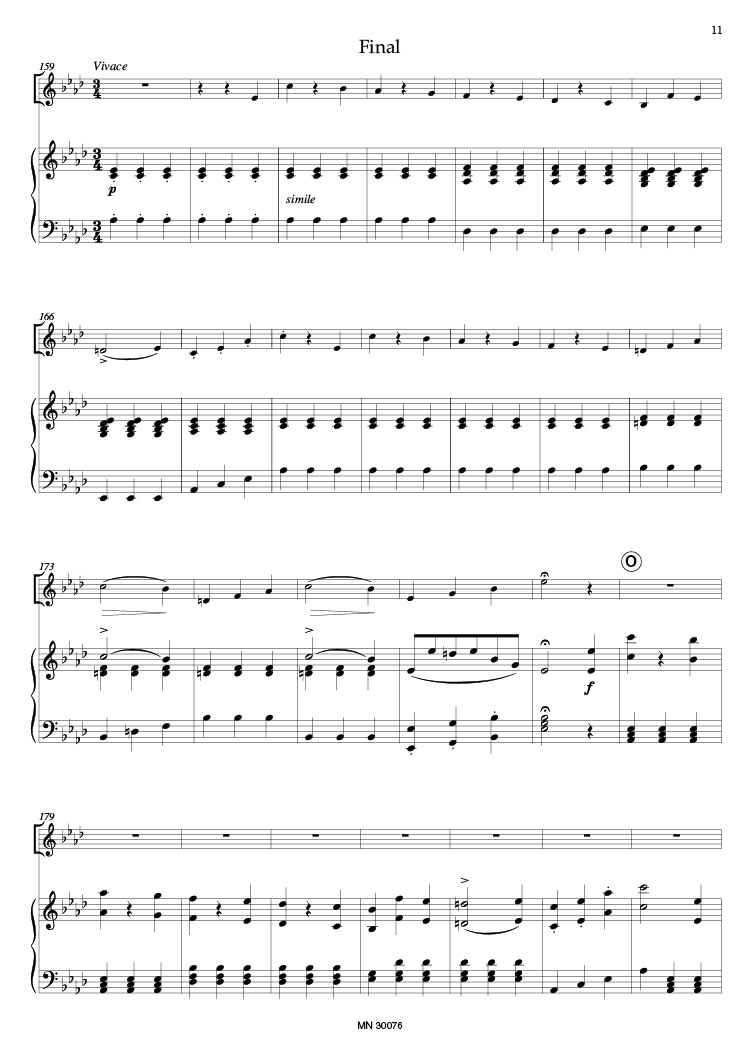
Millares Fantasia para la Tromba
Instrumentation: Trumpet and Orchestra (Flute, 2 Clarinets, 2 Bassoons, 2 Horns, 3 Trombones, Strings)Range: b flat' - g''
Difficulty (I-VI): III
Parts for: Trumpet in E flat and B flat
Series: Edward Tarr Brass
Editor: Edward H. Tarr
Agustín Millares (1826-1896), a cellist's son, was born in Las Palmas (Canary Islands). He learned to play the violin and piano, and at the age of 15 he composed his first piece. At the end of 1846 he went to Madrid to study composition and violin at the conservatory there, but his father's untimely death constrained him to return home as soon as 1847. In the 1850s he played an active part in the musical life of Las Palmas as a composer and conductor, but from 1860 on he devoted himself more to literary pursuits, writing novels and historical works while earning his living as a notary. According to the titlepage, the Fantasia was dedicated to his friend António Gonsalvez, a trumpeter about whom we have not been able to find the slightest bit of information; nor has it been possible to determine anything about a possible performance which might have taken place after Millares completed the score on the 27th of April 1847 (according to his note at the end).
The original solo instrument, an E flat trumpet, does not have much in common with today's little E flat trumpet, since it was the old long "Romantic" trumpet, the tube of which was twice as long as that of today's instrument Its masculine sound could be described as between that of a horn and a trombone. The range of the solo part allows it to be played perfectly well on the modern B flat trumpet, for which reason two solo parts in E flat and B flat have been included with the performing material of the present edition. As is the case with many works for solo trumpet from the period in question, the form of this socalled Fantasia is actually that of a theme with variations. As is customary with these works, a melody is heard in the second part of the introduction which seems to be the theme and is actually related to it, but which reveals itself in its true function as soon as the real theme which reminds us of Schubert's "Trout" finally hurns up. In the first two variations, the soloist shows off some of his tricks, such as fast triplets (which, however, are probably not to be played with triple tonguing) and marked syncopations. The third variation is a soulful adagio in the parallel minor key. The finale, a Waltz, is quite an unusual choice of movement for the period, since Polaccas were then the rage.



